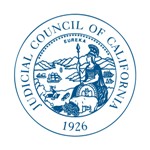Judicial Council Adopts New Budget Process for Trial Courts
Contact: Teresa Ruano, 415-865-7740
April 26, 2013
Judicial Council Adopts New Budget Process for Trial Courts
Historic change to funding methodology in place since 1997 will be based on workload and alters baseline funding for some trial courts

SAN FRANCISCO—In a vote that Chief Justice Tani G. Cantil-Sakauye called “historic” and “a paradigm shift,” the Judicial Council at its meeting today unanimously adopted a new budget development and allocation process for trial courts based on workload instead of the pro rata formula used for the last 15 years. The new process will shift current baseline funding from some courts to others.
A subcommittee of the Trial Court Budget Working Group that developed the allocation process was highly praised by the Chief Justice and members of the council.
“I'm grateful for all of those who spent many hours and contributed to this historic and worthwhile effort,” said Chief Justice Cantil-Sakauye. “This new funding methodology demonstrates our branch’s commitment to self-assessment and represents real progress in the evolution of our court system.”
The subcommittee included judges and court executives from trial courts of variable size, geographic location, and funding need.
“Our goal was to develop a methodology that would result in a more transparent and equitable distribution of trial court funding among each of the 58 trial courts,” said Presiding Judge Laurie M. Earl of the Superior Court of Sacramento County, who serves as co-chair of the Trial Court Budget Working Group and as an advisory member of the Judicial Council. “We’re confident that we’ve accomplished that goal. Over the last several weeks, we’ve presented this funding proposal to the courts, the Legislature, the Governor’s office, the Department of Finance, organized labor, and attorneys before submitting it to the Judicial Council today for approval.”
The shifts in funding resulting from the new methodology will be phased in over a five-year period. In addition, certain elements of the methodology—such as calculating labor costs—will be subject to further refinement, based upon input from trial courts and key stakeholders and subject to final review and approval by the Judicial Council. (listen to audio: 2:17:00)
Other actions taken by the council:
Final Report of the Trial Court Funding Workgroup: The council accepted the final report from this workgroup and adopted all of its 18 recommendations for continuing to improve transparency, accountability, and equal access to justice for all Californians. The workgroup was established by the Governor and the Chief Justice to ascertain whether the goals of the Trial Court Funding Act of 1997 have been met. The report, a collaborative effort between the administration and the judicial branch, summarizes significant strides by the judicial branch in achieving the stated goals and requirements of the act. The council also voted to refer the workgroup’s 18 recommendations to several different council advisory groups for further review and appropriate action. Those recommendations include one addressed at today’s council meeting, as the council adopted a new funding allocation methodology that will result in a more transparent and equitable distribution of funds to each of the 58 trial courts. (listen to audio: 57:00)
Audits of Judicial Branch Entities: The council received the California State Auditor’s report on compliance with the California Judicial Branch Contract Law. That report concluded that the six pilot courts studied generally complied with the Law but that semi-annual reporting could be improved by the AOC. The council also accepted internal audits of the superior courts in Alameda and Los Angeles Counties. In addition, the council accepted an internal audit of compliance with facilities management and maintenance contracts from 2006 through 2011. Per Judicial Council policy, these internal audits will be published on Audit Reports section of the California Courts website.
Judicial Council–Sponsored Legislation: The council approved a recommendation from its Policy Coordination and Liaison Committee related to six proposals for court operational efficiencies, cost savings, and cost recovery. The proposals were developed by presiding judges and court executive officers, with input from members of many of the council’s advisory committees and branch stakeholders. A chart showing the status of all legislation the Policy Coordination and Liaison Committee has taken a position on or reviewed on the council’s behalf is posted on the Court-Related Legislation section of the California Courts website.
Governance, Structure, and Organization of Judicial Council Advisory Groups: The council approved recommendations from its Executive and Planning Committee, Rules and Projects Committee, and Technology Committee to improve the governance, structure, and organization of the council’s advisory groups. The recommendations are designed to help the council set priorities and direction for its advisory group function and will improve the council’s oversight of the advisory groups and the AOC. The next step in this process is to develop guidelines for the advisory groups on issues such as budgets, staffing, projects and timelines.
The meeting agenda and reports considered during the meeting are posted on the California Courts website. In addition, an archived audiocast of the meeting will be posted early next week.
###
